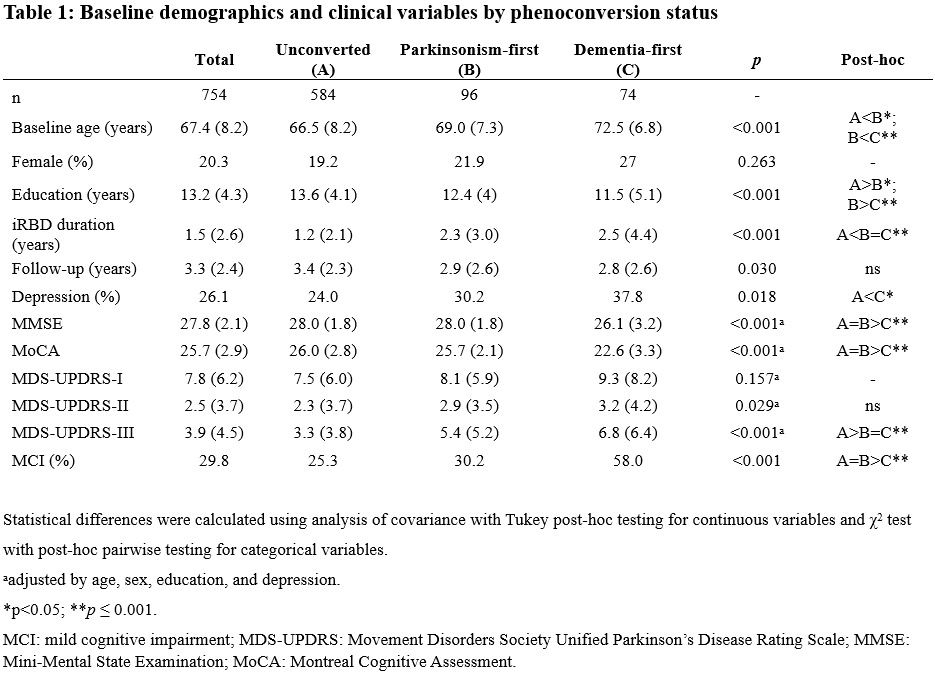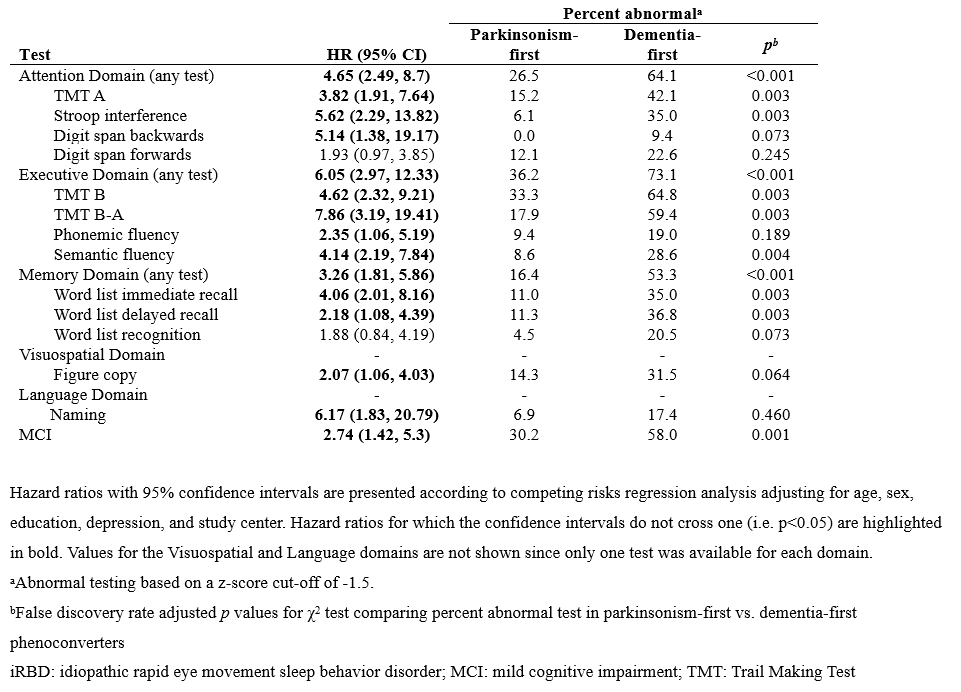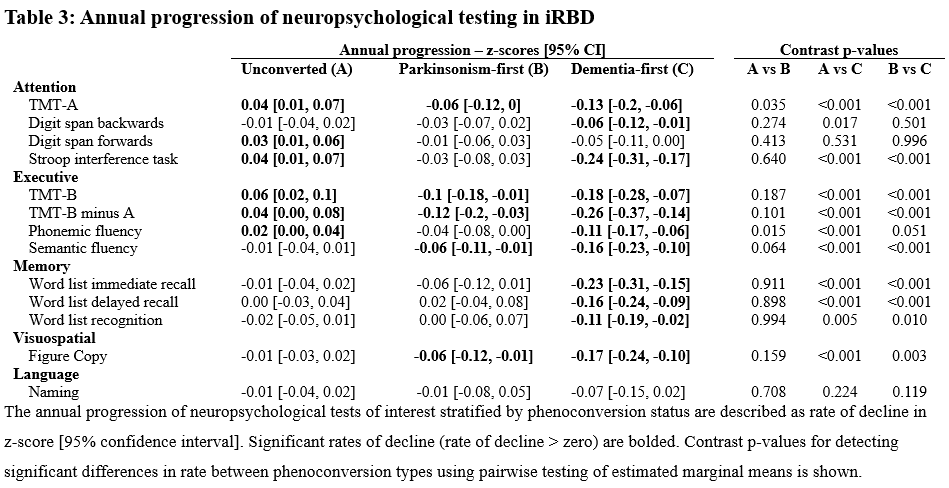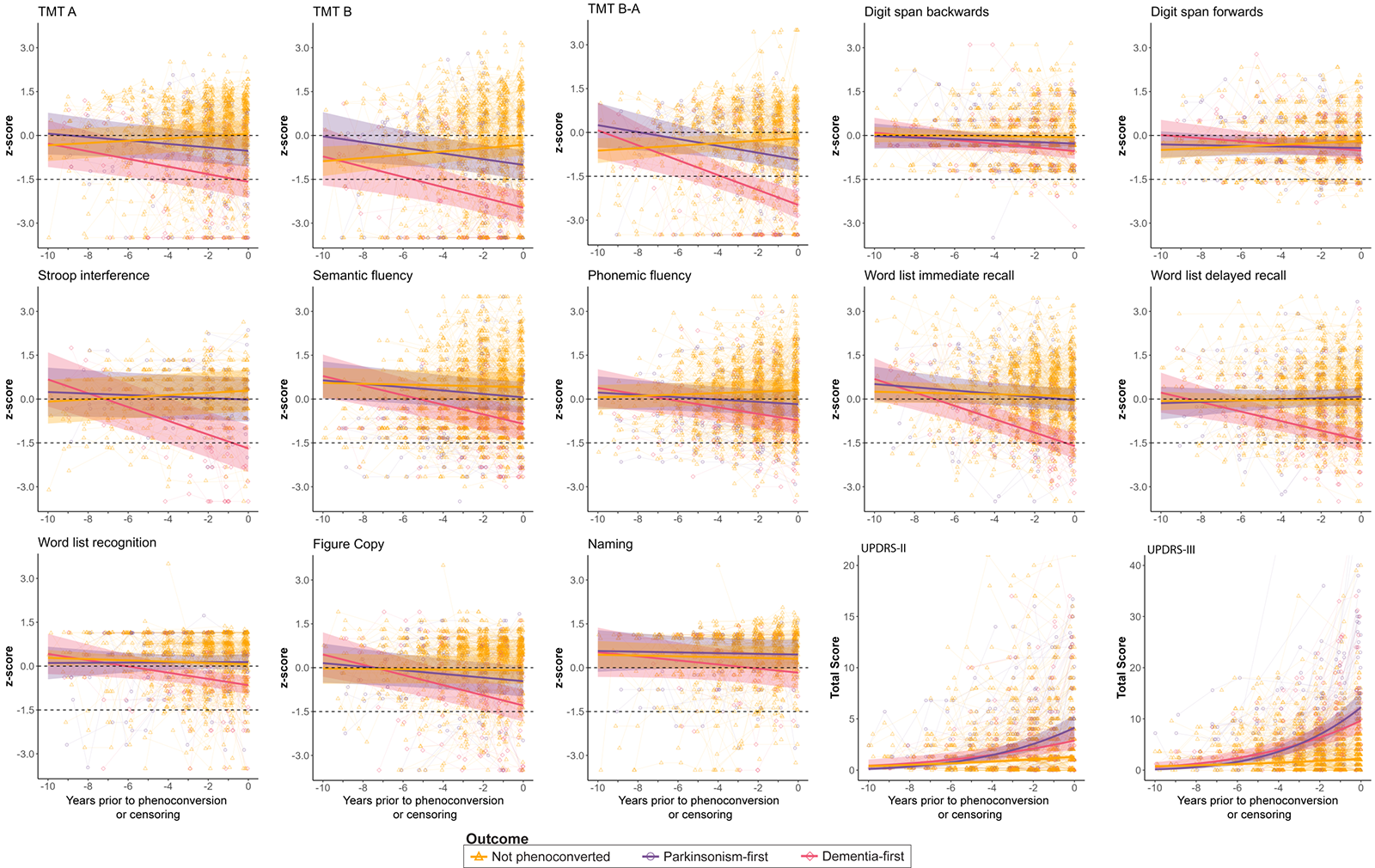Category: Parkinson's Disease: Cognitive functions
Objective: To assess the progression and predictive value of neuropsychological testing on the development of dementia in idiopathic REM sleep behavior disorder (iRBD).
Background: iRBD is a powerful indicator of underlying synucleinopathy, with >80% developing an overt neurodegenerative disease, including DLB and PD. This provides an opportunity to directly observe the evolution of prodromal DLB and to identify which cognitive variables are the strongest predictors of developing dementia. This would enable more precise selection of subjects for future targeted therapies.
Method: iRBD subjects from 10 centers of the International RBD Study Group underwent annual neuropsychological assessment. Competing risk regression analysis determined optimal predictors of dementia. Linear mixed-effect models determined annual progression of neuropsychological testing.
Results: Subjects (n=754) were followed for 3.3 ± 2.4 years, and 170 phenoconverted to overt synucleinopathy: 96 PD and 74 DLB (Table 1). Reduced attention and executive function, particularly performance on the Trail Making Test part B, were the strongest identifiers of early DLB (HRs>4.5; Table 2). Prodromal cognitive changes in DLB started to emerge up to 10 years prior to phenoconversion, starting with decline in executive function followed by attention, then memory and visuospatial dysfunction closer to time of phenoconversion (Table 3, Fig. 1). Among specific tests, the Trail making test B and B-A appeared to be particularly useful as both the most sensitive tests for early DLB with the highest amplitude of change over time, while on longitudinal analysis, progression of memory impairment best distinguished dementia-first from parkinsonism-first phenoconversion.
Conclusion: The pathological processes that underlie cognitive dysfunction in iRBD can be detected very early in the disease course, prior to the motor manifestations of parkinsonism. In iRBD, attention and executive dysfunction strongly predict dementia and begin declining several years prior to phenoconversion.
To cite this abstract in AMA style:
S. Joza, M. Hu, KY. Jung, D. Kunz, D. Arnaldi, JY. Lee, L. Ferini-Strambi, E. Antelmi, F. Sixel-Döring, V. de Cock, J. Montplaisir, M. Lawton, HJ. Kim, F. Bes, P. Mattioli, K. Woo, S. Marelli, G. Plazzi, B. Mollenhauer, A. Pelletier, JS. Sunwoo, N. Girtler, C. Trenkwalder, JF. Gagnon, R. Postuma. Prodromal dementia with Lewy bodies in REM sleep behavior disorder: A multicenter study [abstract]. Mov Disord. 2023; 38 (suppl 1). https://www.mdsabstracts.org/abstract/prodromal-dementia-with-lewy-bodies-in-rem-sleep-behavior-disorder-a-multicenter-study/. Accessed April 3, 2025.« Back to 2023 International Congress
MDS Abstracts - https://www.mdsabstracts.org/abstract/prodromal-dementia-with-lewy-bodies-in-rem-sleep-behavior-disorder-a-multicenter-study/




